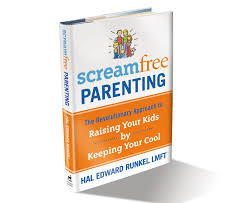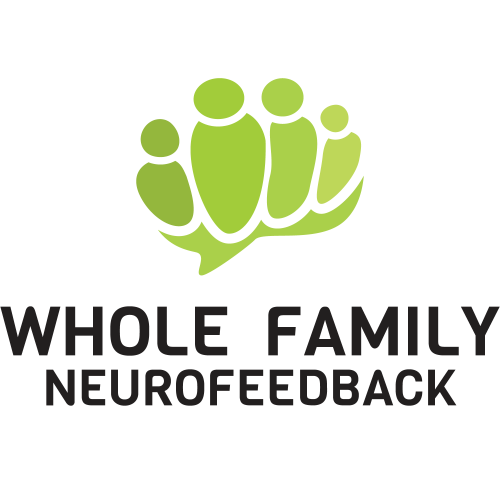Many parents come to us having tried many other things to get their children to behave, achieve, or feel better. From medication to nutrition to supplements to behavior charts to therapy, they have tried it all. Some have sought out support for themselves—parenting groups, books, their own therapy, or marriage counseling. You come to us not only wanting neurofeedback for kids but also for yourselves, having struggled with the stress and strain of a troubled child for too long. We know. We have been there.
But how do you introduce neurofeedback for kids? How do you introduce it to your teenage son or daughter who seems opposed to anything you offer them by way of help or assistance? You’ve done your research. You’re clear neurofeedback is something you’d like to introduce to your family, but how do you talk to your spouse who may or may not be open? If you believe that neurofeedback for kids could be helpful, you may want to think through some of these hurdles.
Here’s some of what I have learned along the way both as a Licensed Marriage and Family Therapist, certified neurofeedback trainer, and as a mom and wife. And be sure to read Candi’s story below too.

Neurofeedback for Kids: The Long Game
First and foremost, parenting and neurofeedback are best thought of in terms of the long game. As a mother of two teenage daughters, I am now clearer than ever, that when I am parenting with the long game in mind, I am at my best. At the core of parenting for the long game for me has been keeping my eyes on the horizon, on my long-term goals for myself and for my family. Keeping my goals in mind helps me deal with my own emotional reactions in the midst of the stress and challenge and sometimes confusion of parenting. With my emotional reactions tamed, I am more able to take responsibility for myself—without the self-blame—and to make the changes that make the difference. Soooo easy, right?
Um…ya. Just remember…long game.
This is where many things have helped us along the way including neurofeedback. In our family, we’ve learned that neurofeedback for kids IS the neurofeedback you give yourself. In other words, the most powerful neurofeedback is the neurofeedback you do for yourself. You are the leader of the family. When you are better, the family will be better. It’s far too easy to minimize and negate how much impact our calm leadership has on our kids—especially when they are suffering or rebelling.
Case Study: Candi
Candi, a mom who recently signed up for our at home neurofeedback program, was worried about getting her 10-year-old son to train. He was violent with her, had been in a lot of trouble at school, and was anxious and suspicious. The idea of connecting sensors to his brain was not going over well. But Candi was clear about her vision for herself and her family, and she had done her research on neurofeedback. She knew it would be helpful. She resolved to do her own sessions, and her husband soon joined her. As he improved, so did she, and so did the marriage. The son’s behavior improved as well. Never having placed one sensor on his head, he became affectionate with his mother instead of violent. This is a complex process and one where there are many ups and downs, but Candi continued her training along with her other efforts, and their lives continued to improve.

Neurofeedback for Kids: What’s Your Vision
For the long game, one needs a vision of what one is working towards. A vision to keep you focused when the going gets tough. Hal Runkel, author of ScreamFree Parenting, outlines a great exercise in Chapter 4 for defining your vision for your family. The questions below reflect a summary of this.

What is your vision for your relationship with your child 20 years down the road? What is your hope for how often you want them to visit? How often would you like them to call you? Do you want them to let you babysit your grandkids? What kind of character do you want your kids to embody, say 20 years from now? What kind of decision maker do you want them to be: someone who can think for themselves or someone who goes along to get along–or something in between? These aren’t rhetorical questions. Spend some time with these. Develop your vision, your goal, your hope for your family life.
Then ask yourself: How do I have to behave right now, to get me one step closer to that vision? What is MY part? (Minus any self-blame or over responsibility) And would neurofeedback help me move towards those goals?
Other versions of this question of vision, especially helpful during your neurofeedback rental and beyond:
- How do I get out of my kid’s way? (Consider: Holding off on lectures of any kind.)
- How do I lead them without stifling their own thinking? (Consider: How much are you coming from emotion vs. thought vs. a balanced integration of the two?)
- How do I guide them without controlling them? (Consider: You can’t control what choices they make, but you can control what choices they have. Get clear about the choices you are offering, and work on being OK, regardless of their answers.)
Neurofeedback for kids: It’s All About YOU
Leadership in the family has something to do with what we call Differentiation of Self. It’s a complex idea, founded in the biological and evolutionary sciences, that has been applied to family theory and family therapy. The idea refers to the human capacity to be a more integrated self, where one is able to say to close family members what one thinks and feels without the need for conflict, distance, over-/under- responsibility, and side taking. I know, that was a rough sentence. But I think it is a good one, so read it again.
Being and staying clear about self, about what you believe to be important, about what your own limits are, and about your values and principles is the key to leadership in a family. This goes into talking to your spouse about getting started with neurofeedback for kids and really—if you’ve been paying attention—it’s neurofeedback for the Whole Family. Differentiation of Self involves efforts to talk about self—without any finger pointing, even in a hidden or subtle way—and without expectation of approval or agreement. It’s a simple concept but hard to do and hard to be consistent about. But, man it makes a difference!
If you’d like more information about this concept, or anything in this post, give us a call or shoot us an email. We are here to help you and your family have the most successful experience with neurofeedback possible.
You can also read about Differentiation of Self at www.thebowencenter.org.

